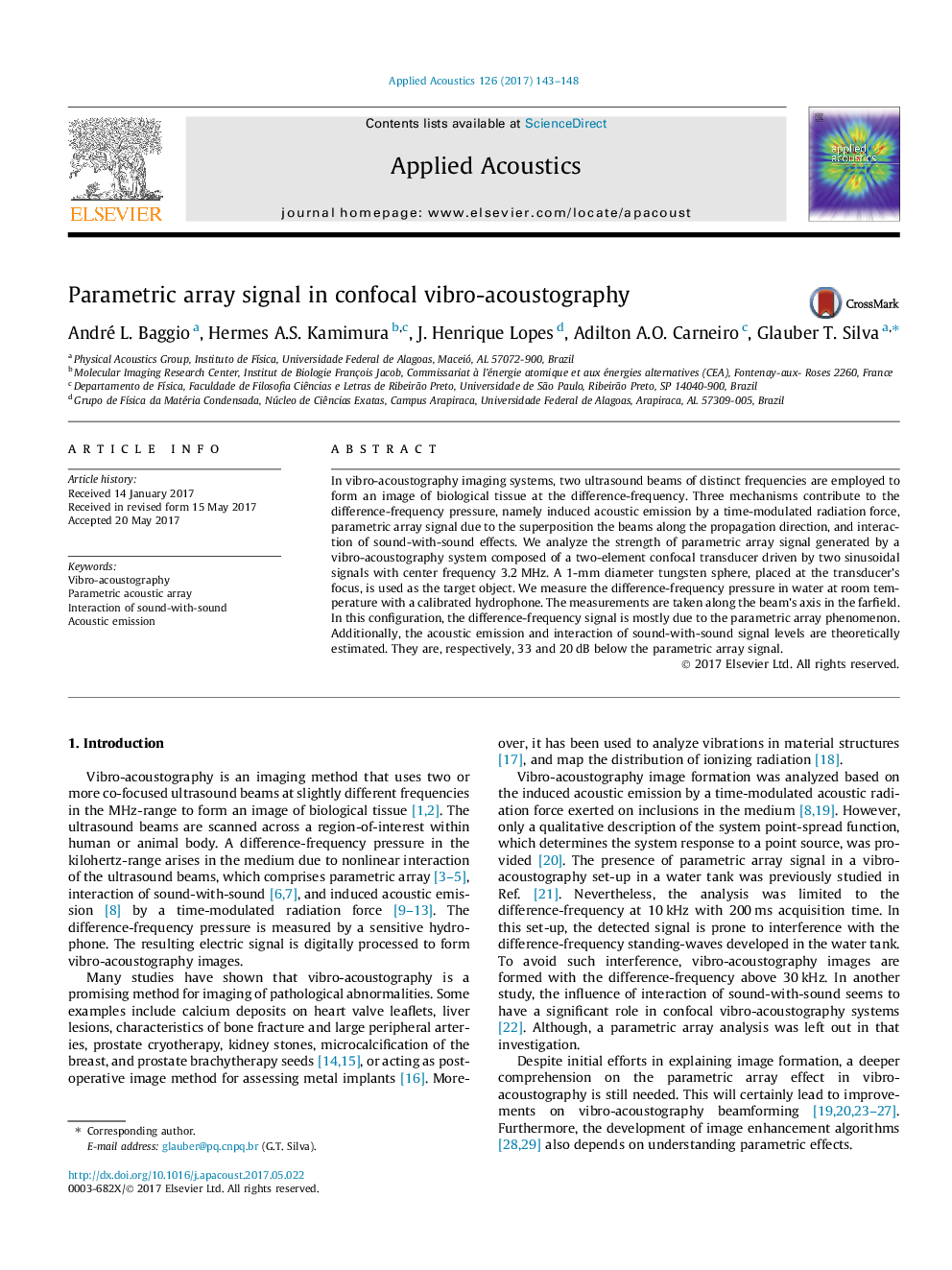| Article ID | Journal | Published Year | Pages | File Type |
|---|---|---|---|---|
| 5010810 | Applied Acoustics | 2017 | 6 Pages |
Abstract
In vibro-acoustography imaging systems, two ultrasound beams of distinct frequencies are employed to form an image of biological tissue at the difference-frequency. Three mechanisms contribute to the difference-frequency pressure, namely induced acoustic emission by a time-modulated radiation force, parametric array signal due to the superposition the beams along the propagation direction, and interaction of sound-with-sound effects. We analyze the strength of parametric array signal generated by a vibro-acoustography system composed of a two-element confocal transducer driven by two sinusoidal signals with center frequency 3.2Â MHz. A 1-mm diameter tungsten sphere, placed at the transducer's focus, is used as the target object. We measure the difference-frequency pressure in water at room temperature with a calibrated hydrophone. The measurements are taken along the beam's axis in the farfield. In this configuration, the difference-frequency signal is mostly due to the parametric array phenomenon. Additionally, the acoustic emission and interaction of sound-with-sound signal levels are theoretically estimated. They are, respectively, 33 and 20Â dB below the parametric array signal.
Related Topics
Physical Sciences and Engineering
Engineering
Mechanical Engineering
Authors
André L. Baggio, Hermes A.S. Kamimura, J. Henrique Lopes, Adilton A.O. Carneiro, Glauber T. Silva,
